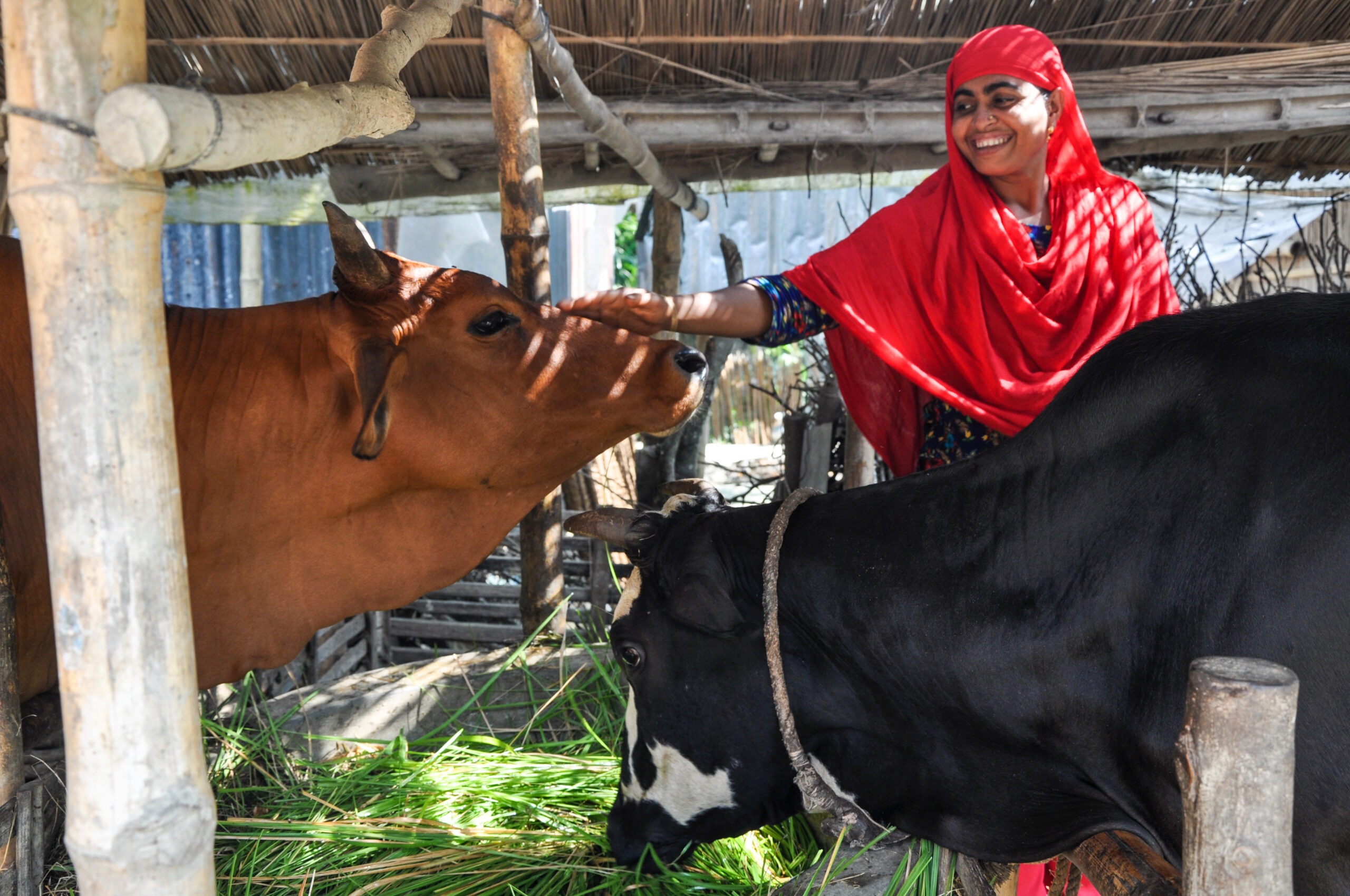Bangladesh’s livestock sector is a major player in the national economy, supporting millions of livelihoods and contributing to food security. The sector provides meat, milk, and eggs as well as job opportunities. However, limited resources, poverty constraints, and extreme weather make it difficult for smallholder livestock farmers and producers to succeed.
The U.S. Department of Agriculture (USDA) Food for Progress Bangladesh Climate Smart Livestock worked to change that. The project built on investments from the Government of Bangladesh and others to raise productivity and expand trade in the country’s livestock sector.
In southern Bangladesh, an increase in extreme weather events, such as flooding and cyclones, poses a special risk to livestock. Helping farmers cope with the weather promotes growth and stability in the sector and raises local incomes. A stronger sector means more jobs, especially for young people. The project aimed to create economic opportunities for Bangladeshi businesses and their U.S. partners, reducing the country’s reliance on China and other foreign entities and becoming self-reliant.
As implementer of the project, ACDI/VOCA used a systemic approach to improving access to knowledge, services, networks, investments, and markets for 250,000 smallholder farmers across 16 districts in Bangladesh. Initially designed as a five-year initiative (2023–2028), the project concluded in 2025 following a strategic realignment of USAID funding priorities.
Project Objectives
- Increase livestock productivity (cattle and goats) by improving animal health and the quality of feed they receive, promoting new technologies, and helping farmers cope with erratic weather patterns that threaten their herds.
- Boost livestock trade by linking farmers to end buyers and improving their access to investment capital.
Sample Activities
- Coordinate with Bangladeshi public and private sector partners as they develop, pilot, and expand cost-effective agricultural practices to improve milk production.
- Address the gaps in Bangladesh’s animal health management system, including by commercializing animal health service models.
- Strengthen links between local businesses and help them improve supply chains, diversify products, and adhere to sanitary and safety standards.
- Increase livestock farmers’ access to loans.
- Develop a more comprehensive animal feed research and development system.
- Improve the identification, diagnosis, and treatment of priority diseases affecting livestock.
- Enhance coordination between agencies and sectors on agricultural policy and information systems.
Anticipated and Final Results
Anticipated Results
Final Results*
Improving Livestock Productivity and Trade
- Increase livestock productivity by 35 percent.
- Grow sales of livestock products by $940 million.
Incentivize farmers to adopt cost-effective agriculture technologies and practices.
- Increased annual milk yields from 369 liters per cow among local breeds to 1,746 liters per cow among improved breeds.
- Raised annual meat output from 78 kilograms per cow among local breeds to 107 kilograms among improved breeds.
- Established access to important vaccines and animal health services for livestock producers.
Boosting Incomes
- Directly support 200,000 individuals, including smallholder farmers, from 50 upazilas in 16 districts.
- Trained livestock producers in advanced agricultural techniques.
- Identified key areas for intervention, including digitalization, enhancing government capacity, and improving access to livestock services.
*As of December 2024
Anticipated Impact
- New and Strengthened Livestock Sector Markets: Improving Bangladesh’s livestock sector will not only boost the local economy but also contribute to the growth of a key market for U.S. partners, such as soybean farmers. Bangladesh is a significant importer of U.S. commodities, including soy. In 2022, it was the 15th largest importer of U.S. soy globally, taking $1.1 billion in product. Most soy imports are used for animal feed, and this area is expected to grow. Bangladesh is also a rapidly developing frontier market for U.S. agricultural technologies. In 2024, for the first time, the U.S. exported $200,000 worth of cattle embryo to Bangladesh.
- Safety and Stability: A lack of socioeconomic opportunities has been found to be a main driver of violent extremism in Bangladesh. The project will indirectly promote stability through economic growth and job creation, especially for young people living in rural areas. Young people are a powerful force in Bangladesh, as the world witnessed in August 2024 when a youth-led movement toppled the country’s autocratic prime minister. Investing in their economic future is key.
- A Self-Reliant Country: Today, Bangladesh is at a political inflection point. An alliance with the U.S. offers an alternative to other foreign influence and exploitative trade agreements. For example, China is Bangladesh’s largest trade partner, and the country relies heavily on dairy imports from China. Improving the livestock sector will allow Bangladeshi people to purchase more locally produced milk and meat products and rely less on Chinese imports.







